- ASP.NET MVC
- Getting Started
- Configuring your MVC Application
- Adding NuGet Packages to your App
- Adding Controls
- Client-Side Support
- Globalization
- Working with Controls
- Styling
- ASP.NET MVC Samples
- Release History
Barcode Encodings
Barcode provides a list of 26 available barcodes suitable for your application. The following table lists all the 26 barcode types supported by the MVC BarCode control.
| Encoding Type | Image | Description |
|---|---|---|
| Codabar |  Codabar Codabar |
Codabar uses A B C D + - : . / $ and numbers. |
| Code39 |  Code39 Code39 |
Code 39 uses numbers, % * $ /. , - +, and upper case. |
| Code49 |  Code49 Code49 |
Code 49 is a 2D high-density stacked barcode containing two to eight rows of eight characters each. Each row has a start code and a stop code. Encodes the complete ASCII character set. |
| Code93 |  Code93 Code93 |
Code 93 uses uppercase, % $ * / , + -, and numbers. |
| Code128 |  Code128 Code128 |
linear barcode symbology defined in ISO/IEC 15417:2007. |
| DataMatrix ECC 200 | 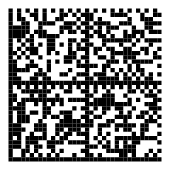 DataMatrix ECC 200 DataMatrix ECC 200 |
Data Matrix is a high density, two-dimensional barcode with square modules arranged in a square or rectangular matrix pattern. ECC 200 is a new version of Data Matrix. |
| DataMatrix ECC-000 to ECC-140 | 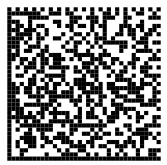 DataMatrix ECC 000 DataMatrix ECC 000 |
Data Matrix is a high density, two-dimensional barcode with square modules arranged in a square or rectangular matrix pattern. ECC 000–140 code uses a convolution-based error correction |
| EAN-8 | 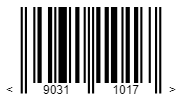 EAN-8 EAN-8 |
EAN-8 uses only numbers (7 numbers and a check digit). |
| EAN-13 | 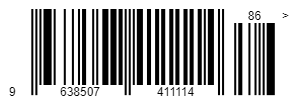 EAN-13 EAN-13 |
EAN-13 uses only numbers (12 numbers and a check digit). It takes only 12 numbers as a string to calculate a check digit (CheckSum) and add it to the thirteenth position. The check digit is an additional digit used to verify that a bar code has been scanned correctly. The check digit is added automatically when the CheckSum property is set to True. |
| GS1-128 |  GS1-128 GS1-128 |
GS1-128 is an application standard of GS1 implementation and the subset of Code 128 barcode. |
| GS1DataBarExpanded |  GS1 DataBar Expanded GS1 DataBar Expanded |
DataBar barcodes are usually used to label fresh foods and can hold information like item's batch number or expiry date. This GS1 Databar symbol is used for retail point-of-sale. |
| GS1DataBarExpandedStacked | 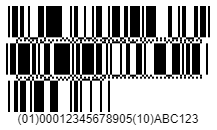 GS1 DataBar Expanded Stacked GS1 DataBar Expanded Stacked |
DataBar barcodes are usually used to label fresh foods and can hold information like item's batch number or expiry date. This GS1 Databar symbol is used for retail point-of-sale. |
| GS1DataBarLimited | 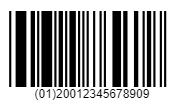 GS1 DataBar Limited GS1 DataBar Limited |
DataBar barcodes are usually used to label fresh foods and can hold information like item's batch number or expiry date. This GS1 Databar symbol is not used for retail point-of-sale. |
| GS1DataBarOmnidirectional |  GS1 DataBar Omnidirectional GS1 DataBar Omnidirectional |
DataBar barcodes are usually used to label fresh foods and can hold information like item's batch number or expiry date. This GS1 Databar symbol is used for retail point-of-sale. |
| GS1DataBarStacked | 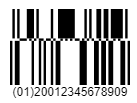 GS1 DataBar Stacked GS1 DataBar Stacked |
DataBar barcodes are usually used to label fresh foods and can hold information like item's batch number or expiry date. This GS1 Databar symbol is not used for retail point-of-sale. |
| GS1DataBarStackedOmnidirectional | 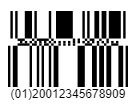 GS1 DataBar Stacked Omnidirectional GS1 DataBar Stacked Omnidirectional |
DataBar barcodes are usually used to label fresh foods and can hold information like item's batch number or expiry date. This GS1 Databar symbol is used for retail point-of-sale. |
| GS1DataBarTruncated | 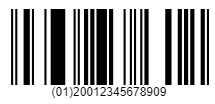 GS1 DataBar Truncated GS1 DataBar Truncated |
DataBar barcodes are usually used to label fresh foods and can hold information like item's batch number or expiry date. This GS1 Databar symbol is not used for retail point-of-sale. |
| Interleaved2of5 | 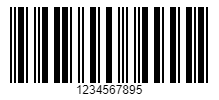 Interleaved 2 of 5 Interleaved 2 of 5 |
Interleaved 2 of 5 (ITF) barcode is a continuous two-width barcode symbology encoding digits. |
| ITF14 |  ITF14 ITF14 |
ITF14 barcode is the GS1 implementation of an Interleaved 2 of 5 bar code to encode a Global Trade Item Number. It is continuous, self-checking, bidirectionally decodable and it will always encode 14 digits. ITF14 is used on packaging levels of a product in general. |
| JapanesePostal |  JapanesePostal JapanesePostal |
This is the barcode used by the Japanese Postal system. Encodes alpha and numeric characters consisting of 20 digits including a 7-digit postal code number, optionally followed by block and house number information. The data to be encoded can include hyphens. |
| MicroPDF417 | 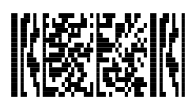 MicroPDF417 MicroPDF417 |
MicroPDF417 is two-dimensional (2D), multi-row symbology, derived from PDF417. Micro-PDF417 is designed for applications that need to encode data in a two-dimensional (2D) symbol (up to 150 bytes, 250 alphanumeric characters, or 366 numeric digits) with the minimal symbol size. MicroPDF417 allows you to insert an FNC1 character as a field separator for variable length Application Identifiers (AIs). |
| Pdf417 | 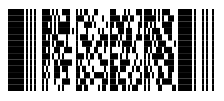 Pdf417 Pdf417 |
Pdf417 is a popular high-density 2-dimensional symbology that encodes up to 1108 bytes of information. This barcode consists of a stacked set of smaller barcodes. Encodes the full ASCII character set. It has ten error correction levels and three data compaction modes: Text, Byte, and Numeric. This symbology can encode up to 1,850 alphanumeric characters or 2,710 numeric characters. |
| QRCode |  QRCode QRCode |
QRCode is a 2D symbology that is capable of handling numeric, alphanumeric and byte data as well as Japanese kanji and kana characters. This symbology can encode up to 7,366 characters. |
| UPC-A | 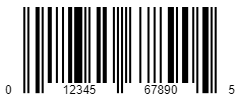 UPC-A UPC-A |
UPC-A uses only numbers (11 numbers and a check digit). |
| UPC-E0 | 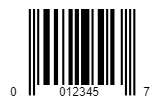 UPC-E0 UPC-E0 |
UPC-E0 uses only numbers. Used for zero-compression UPC symbols. For the Caption property, you may enter either a six-digit UPC-E code or a complete 11-digit (includes code type, which must bezero) UPC-A code. If an 11-digit code is entered, the Barcode control will convert it to a six-digit UPC-E code, if possible. If it is not possible to convert from the 11-digit code to the six-digit code, nothing is displayed. |
| UPC-E1 | 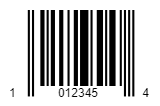 UPC-E1 UPC-E1 |
UPC-E1 uses only numbers. Used typically for shelf labeling in the retail environment. The length of the input string for U.P.C. E1 is six numeric characters. |


